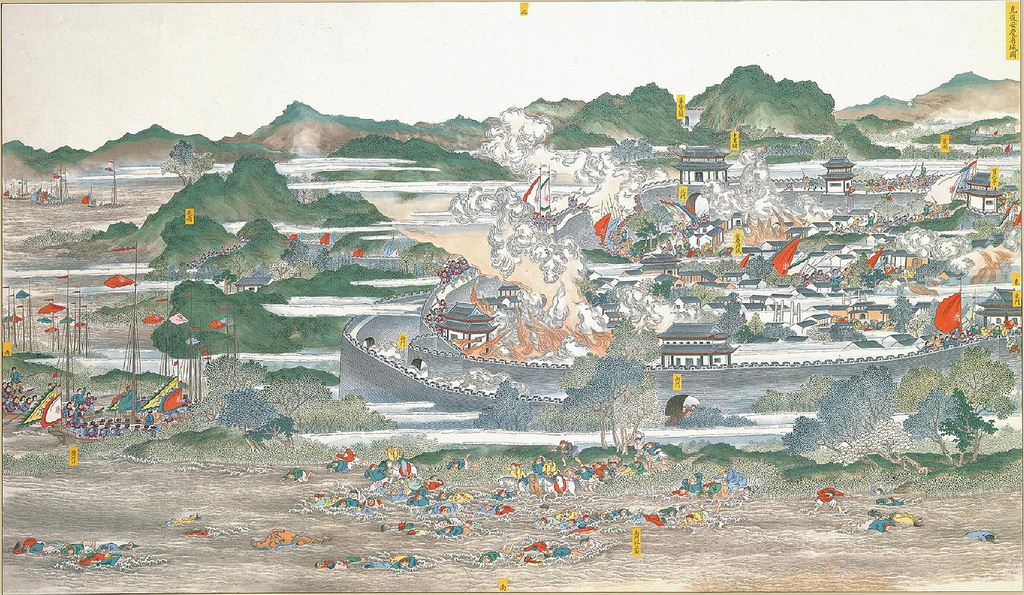Isaac Asimov’s classic sci-fi novel Foundation tells the story of mathematician Hari Seldon and his creation of psychohistory, a futuristic discipline that combines history, sociology, and math to make predictions about the future of humanity. In a world of big data, powerful computers, and uncertain times ahead, could such an idea be possible today?
Peter Turchin, a Russian-American complexity scientist and Emeritus Professor at the University of Connecticut, is one of the leading figures in a new social science that involves studying vast vats of historical data and statistical patterns to understand – perhaps even predict – the story of human civilizations.
“I was trained as a theoretical biologist. I worked at the interface between mathematical models and the population dynamics of animals. I started with insects, voles, and lemmings and things like that,” Turchin told IFLScience.
“Then I decided to switch to studying humans. I’m using pretty much the same mathematical and analytical apparatus, but applying it to different questions,” he added.
Although he says he’s influenced by Asimov, he feels that the comparisons with psychohistory are limited. In his words: “human individuals are not as powerless as Asimov imagined them.” He prefers to call this field of study cliodynamics, inspired by the muse of history in Greek history, clio.
In his latest book, End Times, Turchin looks at the crisis that’s facing US democracy and argues that it’s perhaps nothing new. In fact, if we looked closely at history’s cycles, the red flags were clearly flapping in the wind. These “unprecedented times” aren’t so unprecedented, after all.

Recent years have seen a spike of unrest, protests, and riots in the US.
Image credit: lev radin/Shutterstock.com
Whether it’s the fall of the Roman Empire or the General Crisis of the 17th century, Turchin argues there are common threads that underpin many of history’s great societal upsets, namely the “overproduction of elites” and the falling of living standards for the majority, known as “immiseration”.
It goes like this: in most complex societies, there’s always a small minority of the population that concentrates power in their hands, aka the elites. They inevitably use this power to draw more resources and influence away from much of the populace, leaving them impoverished and angry.
Simultaneously, it fosters enough economic growth and technological change to encourage more elite aspirants to join the upper echelons of society (some might call this the growth of the educated middle class). However, the existing power structure can only stretch so far. Over time, we see an ever-increasing number of people compete over finite slots in the power structure, causing the elite class to bloat and become increasingly irked.
Together with the disenfranchised masses, an arm of “counter-elites” arises who attempt to use their scraps of power to undermine the existing power structure. Left unchecked, the power structure enters its “end times” and eventually breaks down.
To many, this might sound awfully similar to the situation facing the US and much of Europe. Society is churning out too many graduates and not offering enough graduate jobs, creating a swelled class of dissident voices in society. Meanwhile, the number of billionaires grows, yet living standards for the majority have nosedived. As a result, we’re becoming increasingly divided, angry, and prone to unrest.
All in all, it seems like those “end times” may be brewing.
Turchin and his team of cliodynamic cronies have collected over 200 examples of societies collapsing, some of which appear to follow the patterns he has identified. For instance, he has just published a study that looked at the collapse of the Qing Dynasty and the bloody Taiping Rebellion in the 19th century. Using mathematical models, it concluded that the crisis was essentially driven by disgruntled elite wannabes and economic grief, just like countless examples in history – and perhaps here today.

An 1884 painting of the Battle of Anqing during the Taiping Rebellion, the bloodiest civil war in history.
So, does this mean we can foresee the collapse of the US by looking at heaps of data from the past and looking for its periodical cycles? If only.
The end times may appear to be looming, but there’s no telling how the situation will unfold. While societies tend to work on approximately 100-year cycles, according to Turchin, a wealth of wider factors can sway the timeframe. There are even examples where societies can navigate out of “end times” without a collapse if appropriately managed.
“These are not mathematical cycles, right? It’s not like there is some kind of a cosmic clock that pushes us into this crisis. It’s internally driven. Because it’s internally driven, different events may either delay or advance the cycles. It’s a statistical theory, I guess, and not a strict periodicity,” he explained.
Not everyone is convinced by Turchin, however. While few would argue against the idea that history can teach us lessons for the future, some have suggested that the field of cliodynamics is akin to junk science. Global human societies are immensely more complex, with infinitely more variables, than a humble population of bugs in a field. Perhaps we shouldn’t be so naive to think we can unveil its depths using limited data and biased history books.
One damning review of his new book by the New Statesman was titled “Peter Turchin’s empty prophecies.” It reads: “More than once, I wondered if this whole project was a hoax […] This is TED-Talk-lit that so vastly over-promises that the under-delivery is baked in from the start.”
Nevertheless, Turchin acknowledges the limits of his theories and recognizes that predicting the future is a fool’s game.
As he said very clearly in a 2013 blog post: “CLIODYNAMICS IS NOT ABOUT PREDICTING THE FUTURE!” Instead of making prophecies, Turchin says he’s simply interested in the idea of applying mathematical analysis to human societies and seeing whether any of the identified patterns can help us understand the predicament that lay before us.
“Human societies are very complex. You have to understand economics, sociology, anthropology, climatology, and many other things. It’s the sheer complexity of the subject [that] has prevented simple approaches and that’s why it took a while. We are still at the beginning of this path in understanding human societies using mathematical tools,” he told IFLScience
“Sorry that it’s not simpler, it’s not a simple story.”
Source Link: Is The US Entering Its "End Times"? Other Fallen Societies May Suggest So